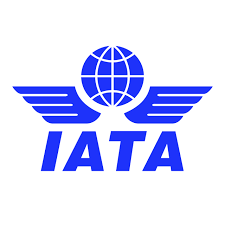The International Air Transport Association (IATA) called upon the International Telecommunication Union (ITU) and national telecommunications regulators to ensure that the deployment of 5G and future 6G networks operating near critical aviation frequencies does not compromise the safety and reliability of radio altimeters and other essential avionic systems.
The call comes as the ITU prepares for the World Radiocommunication Conference 2027 (WRC-27) and conducts detailed studies to determine the technical conditions for global 5G/6G deployment. The guidance established at WRC-27 will set the long-term framework for enabling future telecom connectivity while permanently protecting safety-critical aviation systems.
To support this necessary process, IATA has submitted a working paper at the ITU WP5B Meeting (Geneva, 18-27 November 2025), which outlines the comprehensive operational scenarios and safety requirements that must guide future spectrum policy.
IATA’s paper demands that future spectrum policy account for all key safety scenarios, including take-off, landing, taxi, go-arounds, adverse weather conditions (such as turbulence and windshear), and emergency or off-nominal situations. Radio altimeters, which rely on defined spectrum availability, provide essential height information across all these conditions and underpin both flight crew awareness and automated safety systems. The paper also reaffirms the importance of maintaining a minimum separation of 35 ft (11 m) between aircraft and terrestrial 5G transmitters.
“The benefits of 5G and 6G can never come at the cost of aviation safety. Spectrum decisions must be based on real-world aircraft operations, not idealized telecommunications industry modeling,” said Nick Careen, IATA Senior Vice President Operations, Safety and Security. “That means ensuring ITU studies fully reflect the most demanding conditions pilots face. With input from aviation users, WRC-27 must deliver clear global rules to ensure the safe coexistence of radio altimeters and other safety-critical avionic systems with next-generation telecom networks across all phases of flight.”
A significant safety concern is the imminent expiration of temporary 5G mitigation measures that were voluntarily implemented by telecommunications providers in several countries to protect the Radio Altimeter (RAD ALT) frequency band (4.2–4.4 GHz).
In key markets, these protections are lapsing:
- Canada: Key mitigations are scheduled to lapse on 1 January 2026.
- Australia: Key mitigations are scheduled to lapse on 1 April 2026.
- United States: Existing 5G mitigations are scheduled to be removed in 2028, and plans to auction the adjacent Upper C-Band (3.98-4.2 GHz) are currently advancing.
This removal of protection is happening years before more resilient, next-generation radio altimeters are expected to be available to airlines, which is estimated to be no earlier than the early 2030s.
“Current 5G mitigations were never designed as a long-term solution and several will expire within months. At the same time, more resilient radio altimeters will not reach airlines until the next decade. That leaves a significant mitigation gap,” said Careen. “With new spectrum auctions underway and protections being lifted in key markets, regulators must not assume safety will take care of itself. The industry needs clear, consistent safeguards to bridge the period before new altimeters are available.”
IATA urges the ITU and national regulators to use the WRC-27 process to establish a permanent and globally harmonized regulatory framework that secures the long-term safety of all flight operations.




